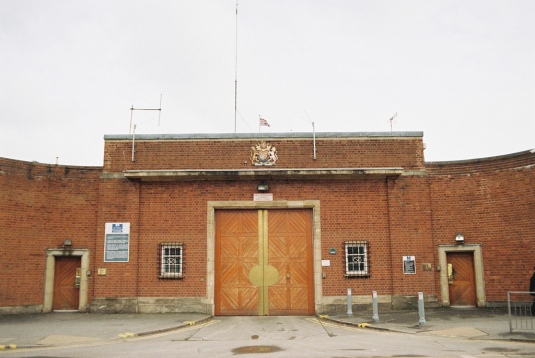On 26 November 2013, the Pathways group was visited by Xenofon Sgouros, a consultant psychiatrist who hails originally from Greece, but who since 1998 has spent part of the year working in the British NHS. He kindly consented to answer our questions on psychosis and related mental health subjects. The present author, Mark Conlon, recorded the meeting on a laptop computer, and I’ve structured this article around the conversation that unfolded. The topics addressed are complex, and in attempting a condensed overview one thinks of Gustave Flaubert’s witticism about historians gulping an ocean and micturating a cupful. There may, however, be a role for the simplificateur as counter to the trend of academic specialization, of knowing more and more about less and less. I should make it clear that any factual inaccuracies in what follows are my responsibility, rather than in any way attributable to Dr Sgouros.
As preamble, Dr Sgouros talked about his attraction to psychiatry. The profession has a sometimes alarming history – whirling chairs, lobotomies, the bizarre “treatments” of Julius Wagner-Jauregg – and Ewen Cameron’s sinister experiments of the 1950s and 1960s, sponsored by the CIA’s MKUltra programme, prove it would be complacent to assume they all lie in a remote past. A figure like Charles Krauthammer, a psychiatrist who branched out from diagnosing mania to espousing a neoconservative doctrine of “unipolar” US imperial hegemony, is hardly one to inspire confidence in more recent practitioners of the discipline. It was thus good to be reassured that there are those drawn to psychiatry for honourable and commendable motives, out of a genuine desire to ameliorate, in an enlightened fashion, what Herbert Marcuse called the “unhappy consciousness” of modern society. Dr Sgouros identified his late teenage years as the time he became seriously fascinated by the human mind, by the “chemistry of the brain and human emotions.” He remembers that he was the one to whom his friends in Greece would turn for advice on girlfriends and other matters of the heart. (To interject a note of levity, the fact that he was a fan in those years of progressive rock is verification in my eyes that he is on the side of the angels.) After graduating in medicine, and not being enthusiastic about general practice, Dr Sgouros had to decide between specializing in neurology or psychiatry. He opted for the latter because of its diversity, psychiatry being “medicine but not only medicine” inasmuch as it is imbricated with the whole spectrum of human behaviour and culture.
For the benefit of Al, an attendee of our sessions who has not experienced mental illness, we asked Dr Sgouros for a thumbnail definition of psychosis. The query is not a straightforward one. In 1987, the American Psychiatric Association was forced to admit: “Despite extensive field testing of the DSM-III [the third edition of the Diagnostic and Statistical Manual of Mental Disorders, the closest thing to a canonical text in psychiatry] diagnostic criteria before their official adoption, experience with them since their publication has revealed, as expected, many instances in which the criteria were not entirely clear, were inconsistent across categories, or were even contradictory.” The inflation of categories in the two subsequent iterations of the Manual (2000 and 2013) can only have thickened the disjunctive fog. Dr Sgouros applied an Ockham’s razor to the problem by asserting that, essentially, psychosis involves beliefs split off from reality, these being clung onto in spite of being very unrealistic: as he phrased it, “the total process of thinking is distorted and disjointed.” Al observed that, when the phenomenon is defined in these broad parameters, it is one to which no one is immune. Dr Sgouros strongly agreed, and spoke of a “continuum of severity” from transient paranoid thoughts, where even among his fellow health workers he would suspect anyone claiming to be free of such thoughts of dissembling, to full-blown psychoses impervious to rational refutation.
A new member of our group, Frank, raised the question of a “paradigm shift” in attitudes to mental health, away from the biological model that is the dominant clinical approach. The biological orthodoxy, in which life experiences tend to be minimized to “triggers” of underlying organic disease, has overshadowed writers such as Gregory Bateson and Frieda Fromm-Reichmann, and after them assorted exponents of antipsychiatry, who explained psychosis in familial and societal terms, and who sought, in the words of Russell Jacoby, “to indict, not absolve, a maddening society.” In reply to Frank’s curiosity as to whether the pendulum is swinging back, Dr Sgouros said that there had been a slight shift since the 1990s toward a “psychosocial” model, with psychological interventions enhanced over the past five to seven years, citing as an example the Improving Access to Psychological Therapies (IAPT) initiative, soon to be expanded to cover more severe illnesses like psychosis. He adjudged this a move in the right direction, stating that “we have all been influenced by our families” and not seeking to downplay the role of social factors. As a professional psychiatrist, he can’t dismiss the biological standpoint; while conceding the historical abuses against which the antipsychiatrists reacted, “terrible stuff” he witnessed first-hand when employed at a large mental hospital in Greece, he was guarded in his sympathy for a critique of biologism carried to an antipsychiatric extreme, remarking on the irony of R.D. Laing’s progeny having grown up to be anything but well-adjusted. When I brought up the name of Thomas Szasz, he confessed to unfamiliarity with the Szaszian arraignment of psychiatry as moralistic inquisitorial apparatus. (Not, I should add, that Pathways members are aligned with Szasz’s brand of individualist libertarianism, the shortcomings of which make it unsurprising he is championed by the Church of Scientology. We are no subscribers either to his travestying depiction of mental illness as manufactured myth, the acceptance of which would invalidate the existence of this site.) By way of mitigation, Dr Sgouros elaborated that he is suspicious of anything to which the prefix “anti” is attached. Unavoidably, this would encompass the Manichean dualism of an antipsychiatric enterprise echoing Szasz in its excoriation of biological psychiatry, or “psychiatrosis” as R.D. Laing mockingly pathologized it in a 1964 issue of New Left Review, as a fettering of dissent and nonconformism.
Frank was interested in the extent to which a conceptual shift of this sort might have created renewed space for the ideas of Sigmund Freud and Carl Jung (related but not identical, the pair having come to doctrinal blows in 1912 over Jung’s Transformations and Symbols of the Libido). Frank Sulloway, in his 1979 book Freud: Biologist of the Mind, contended that psychoanalytic and biological perspectives are not fundamentally divergent, but a cursory comparison of Freud’s conjectures with the Diagnostic and Statistical Manual of Mental Disorders – notwithstanding the infamous Freudian statement that “biology is destiny” – reveals the epistemological bases of the two to be distinct. Ludwig Wittgenstein advanced a plenary dismissal of Freudianism as mythology, while Theodor Adorno polemicized that “In psychoanalysis nothing is true except the exaggerations.” (Adorno was not above the odd exaggeration himself, writing in Minima Moralia that the “morbid scission” of psychosis arose from the permeation of human minds by the “radical objectification” of the capitalist division of labour.) Todd Dufresne’s vituperative Killing Freud pulls no punches in characterizing psychoanalysis as “a serious menace based on a top-heavy theoretical edifice, faulty premises, circular and self-validating arguments, methodological laxity, motivated self-deception, bad faith and lies piled upon lies for more than a century.” Dr Sgouros was far more measured in his assessment, declaring that Freud’s notions, of the unconscious, the ego and so on, had become so entrenched in our cultural belief system as to be beyond simple eschewal. He held that psychodynamic therapies derived from them, such as cognitive behavioral therapy, are helpful, while noting that the core principle of CBT was arrived at centuries before Freud by Zen Buddhism and the Stoic philosopher Epictetus. In Dr Sgouros’s judgement, psychoanalysis itself should be considered outdated as a treatment.
Freud’s celebrated case studies were of neuroses rather than psychoses, and his acquaintance with the latter was not extensive. He described psychosis as a disavowal of reality, an “active phase of remodelling” of the ego. It is unclear whether his adamantine pessimism, which interprets psychological disturbance as the price extracted by culture for a denial of instinctual drives – the argument of Civilization and Its Discontents, a 1930 tract of Spenglerian gloom – offers much hope for the banishment of psychotic conditions, as opposed to a less ambitious transmutation of neurosis into commonplace unhappiness. Freud believed schizophrenics, like sufferers of acute melancholia, to be incapable of forming the bridge of “transference” required of the analysand – or, to frame it in less dryly technical language, deemed them insufficiently deferential to the psychoanalytic maître a penser – lending weight to Michel Foucault’s charge that psychoanalysis “has not been able, will not be able, to hear the voices of unreason.” He admitted to fear and dislike of them, though holding out the possibility that refinement of the “talking cure” might remedy the situation. A two-week trial period of analysis was recommended to screen out seemingly neurotic patients who were actually psychotic. Freud’s contemporary, the psychiatrist Karl Jaspers, took a comparable view, writing in 1913: “The most profound distinction in psychic life seems to be that between what is meaningful and allows empathy [i.e., neurosis] and what in its particular way is ununderstandable, mad in the literal sense [psychosis].” Subsequent analysts, such as Silvano Arieti, have adopted a more optimistic stance. They have also, thankfully, revised Freud’s bigoted contention that the disavowal of reality in psychosis relates to – in Freudian jargon, is a “paranoid projection” of – repressed homosexual urges, an idea developed out of a misreading of the memoirs of German judge Daniel Paul Schreber, a man Freud never met. Unfortunately, for those reliant on the NHS, the matter is more an economic than a disinterestedly scholastic one. “Free association” does not come free in the monetary sense, and depth psychology (which may be “interminable” in Freud’s 1937 formulation) will lose out at a time of “evidence-based” financial stringency to the quick fix of medication.
Dr Sgouros acknowledged an intellectual debt to Jung, disclosing he had a “personal liking” for Jungian approaches, albeit more from a philosophical than a therapeutic angle. I broached the issue of Jung’s right-wing politics, his faith in a revolution (“an outburst of a new spirit”) inaugurated by Hitler in 1933, less pusillanimous and careerist than Martin Heidegger’s adherence to National Socialism but a disastrous miscalculation by any reckoning. The fervour did not fully ebb until Kristallnacht in November 1938. Gerhard Wehr has him pegged as a “psychoanalyst foaming with fascism” in his 1970 Portrait of Jung. Marxist philosopher Ernst Bloch had no hesitation in issuing a similar rebuke. Immanent, ahistorical “archetypes” of personality and an inherited “collective unconscious” – shockingly split by Jung into Aryan and Semitic wings – are disturbingly congruent with Nazi ideology, and Erich Fromm gibed that Jung was a “necrophilious” character enamoured of death, a trait suggestive of the viva la muerte morbidity of fascism. Remembering that prominent anarchist Herbert Read drew inspiration from Jung’s texts, and that Frantz Fanon, while censuring Jung’s racism, deployed Jungian concepts in Black Skin, White Masks, possibly I am painting too negative a picture. It could be that the Swiss Philemon, to borrow the name of one of the purported archetypes, is sufficiently protean – an “avant-garde conservative” in Jay Sherry’s conflation of opposites – to license diverse interpretations. Dr Sgouros clarified that he holds no brief for Jung politically, arguing that he should be seen in the context of his times, and valuing him in the way he values Richard Wagner, as someone in whom diagnostic wheat – or musical worth in Wagner’s case – can be separated from ideological chaff.
Jung’s corpus is littered with what to the present writer are embarrassing divagations into alchemy, astrology and UFOs, with reliance on discredited concepts purloined from Lamarck (acquired characteristics) and Henri Bergson (a vitalist animating spark, or “ghost in the machine” in Jungian terminology, whence the connectivity between Jung and New Age mysticism). Much as one may bewail psychiatry’s biological pretensions, and Dr Sgouros’s imprimatur notwithstanding, a headlong flight into occultism and bogus science is no alternative. Frequently, Jung’s epigones take up the irrationalist baton of the master and run with it: a representative work of secondary literature is Sallie Nichols’s Jung and Tarot: An Archetypal Journey, a title lurid enough to have one scurrying back to the “godless materialism” of Freud regardless of the latter’s prejudice against psychotic illness. Admittedly, one can’t help warming a little toward someone who, in contradistinction to Freud’s exhaustive (and exhausting) labouring of Jokes and Their Relation to the Unconscious, possessed the laconic self-deprecation to quip “Show me a sane man and I will cure him for you.” We should, furthermore, give Jung credit for taking issue, from his 1906 article ‘The Psychology of Dementia Praecox’ onwards, with a hidebound Kraepelinian conception of schizophrenia as an irremediable arc of declension; according to Freud’s biographer Ernest Jones, he aspired to be the first to achieve a cure solely through psychoanalytic methods. If we are to extract a useful approach to psychosis from Jungian mythopoeia, it might lie in seeing psychotic states as a “shadow” overwhelming the social façade of the “persona” as a prelude, in an optimal scenario, to better understanding of the self: in psychiatric parlance, “integrating” rather than “sealing over” the experience. Although the gnomic cast of his utterances makes it difficult to be sure, conceivably that is the import of Jung’s maxim that “Only what is really oneself has the power to heal.”
We touched on the wilder shores of psychoanalysis when I proposed Wilhelm Reich as a leftist corrective to Jung, and found Dr Sgouros to be surprisingly sympathetic to a figure who in mainstream psychiatric circles must appear as, to put it mildly, a heterodox thinker. He said that he’d been much influenced by Reich’s books in younger life. I second his approbation with regard to Reich’s work of the 1920s and 1930s, the period of the renegade psychiatrist’s association with Austrian social democracy and the German and Danish communist parties, which remains highly relevant in its dissection of the malice and authoritarianism of what Denis Healey, in an era of pithier politicians, dubbed the “sadomonetarist” mentality of the hard right. Unless one is a diehard Reichian, it’s hard to deny that in babbling about bions and cosmic orgone energy the inventor of the Cloudbuster later went completely bonkers, if I may be permitted to use such vulgar and insensitive language in this blog. By the stage we reach the preposterously named vegetotherapy, crankiness of theory and appellation are in perfect harmony, even if Reich’s psyche was not. In Freud or Reich?: Psychoanalysis and Illusion, a hostile evaluation of Freudo-Marxism from an orthodox psychoanalytic perspective, Janine Chasseguet-Smirgel and Bela Grunberger predictably allege that Reich was already psychotic at the time Freud repudiated him, while Paul Federn, Sandor Rado and even Reich’s daughter Lore weighed in with similar accusations. Be that as it may, the earlier materialist writings have, in my opinion, penetrating things to say about the ways in which psychosis might be engendered by patriarchy, the bourgeois family and other structures of repression, and how in turn, to quote Reich’s own words, “the schizophrenic form of psychic illness is regularly accompanied by illuminating insight into the irrationalism of social and political mores.”
Viewing the aetiology of psychosis as biological has gone hand in hand with seeing the appropriate treatment for it as a medicalized one of neuroleptic medication. Sara Cooper enquired whether there are drugs in the pipeline that would entail fewer injurious side effects than current versions, a pressing question for members of our group undergoing the “maintenance therapy” of long-term use. However potent one considers antipsychotics to be in damping down “positive” symptoms of hallucinations and delusional thinking, iatrogenic consequences (ones brought about by the drugs themselves) weigh heavily on the minus side of the ledger. Tardive dyskinesia, for instance, has been described as “one of the worst medically-induced disasters in history” (by Peter Breggin, in his 1983 book Psychiatric Drugs: Hazards to the Brain). D.G. Cunningham Owens, in A Guide to the Extrapyramidal Side-effects of Antipsychotics, devotes over 300 disquieting pages to detailing the dystonia, Parkinsonism, akathisia and other disorders that can result from the drugs, and he is a writer who situates them in the “first division” of pharmacological efficacy. The latest generation of antipsychotics, the “atypical” ones introduced in the 1990s, has not lived up to corporate hyperbole – or brazen propaganda, not to put too fine a point on it – in eliminating the risks, and in fact has thrown up further perils such as agranulocytosis. Since patents are still operative on these newer drugs, and they are immensely profitable, there is little incentive for the “medico-pharmaceutical complex” (as David Healy refers to these agglomerated “darlings of Wall Street” in The Creation of Psychopharmacology) to improve on them. Dr Sgouros was not able to provide much comfort on this question. He confirmed that what he termed a “boom” in new drugs in the 1980s and 199os had slowed markedly, with research and development budgets reduced, and only a few new types (e.g., Asenapine) emerging since then. I know from the advice he’s given me that Dr Sgouros is no advocate of medication as magic cure – he can’t, one might say, be convicted of membership in the cult of psychotropic soteriology – and it may be that he looks on this situation with a greater degree of equanimity than more medication-oriented colleagues.
We asked Dr Sgouros what he made of Paul Hammersley’s suggestion of childhood abuse as a generator of psychotic illness. This has been put forward as a “traumagenic neurodevelopmental” explanation by psychologist John Read, editor of the journal Psychosis. It is traceable back to the “seduction theory” for the abandonment of which Freud has been taken to task by Jeffrey Masson, Freud in his work on hysteria with Joseph Breuer having spoken of “psychic traumas” that were “mnemic residues” of sexual abuse. Paul Hammersley is especially insistent on an association between such abuse and auditory hallucinations of a persecutory nature. On the last occasion Paul visited our group, he drew us a schema of psychosis as a form of dissociation analogous to posttraumatic stress disorder (PTSD). Dr Sgouros, though he would add stress the influence of genetics to a greater extent than Paul, together with trauma in later life and additional factors such as substance abuse, agreed with him in saying that “trauma in early life plays a very important role.” In this as in other matters, we found Dr Sgouros to be open-minded about ideas of social causation that appear eminently commonsensical, if not blindingly obvious, but are overlooked by psychiatrists who cleave to a circumscribed medical framework.
In recent years it’s become apparent that hearing voices is not the sole preserve of psychiatric patients, but is widespread in the general population. Although impossible to quantify with precision, researchers such as Marius Romme and Richard Bentall suggest the ratio of diagnosed to non-diagnosed hallucinators may be in the region of one to ten. Research in the Netherlands showed that widowed persons often hear the voice of a dead partner, and that 6.2% of a sample of more than 7000 people had experienced hallucinations of a similarly benign hue. Dr Sgouros concurred that the phenomenon is not necessarily a symptom of psychopathology. Indeed, he was more charitable to those claiming to hear religious voices than an atheist like myself is inclined to be, rejecting a pathologization of what he called “spiritual experiences” and not discounting the possibility of communication with supernatural forces. He pointed out that a harsher judgement entails the medicalization of a large proportion of the human race, from Old Testament prophets onwards, and also a disdainful attitude – what relativists would deplore as “Eurocentric” condescension – to societies with different cultural traditions, such as South America with its shamans and spiritual healers. He saw the matter more as a pragmatic one of the way in which such experiences are integrated into a person’s life, whether to positive or negative effect. Rather than insisting on a dogmatic verdict, it may be best here to quote a line from George Bernard Shaw’s quizzical Saint Joan. In the play, when it’s put to her that the ostensibly divine voices she hears are fabrications of her own imagination, the character of Joan retorts: “Of course. That is how the messages of God come to us.”
Dominic Orosun asked Dr Sgorous to elucidate the connections between psychosis and personality disorders. He replied that he does not particularly like the term personality disorder, an “artificial concept” he sees as describing behaviours rather than personalities as such. He told us he had firmly opposed the intention of the previous government to lock up people labelled as having a severe and untreatable antisocial personality disorder that potentially endangered others, going so far as to say he “freaked out” when he heard about the measure. He stated that those with personality disorders are “certainly more prone to psychotic disorders” due their inability to cope with stress, which leads them to the creation of their own realities, the hallmark of psychosis. “Schizotypal personality disorder” appears in the World Health Organization’s International Statistical Classification of Diseases and Related Health Problems (ICD), but not in its US counterpart referred to above, the Diagnostic and Statistical Manual of Mental Disorders (DSM). (“Narcissistic personality disorder” and “borderline personality disorder” are by contrast in the DSM, but omitted from the ICD. In the context of North America, the fons et origo of the “culture of narcissism” deprecated by Christopher Lasch, one can discern a certain logic to the inclusion of the former.) As the name implies, schizotypal personality disorder has elements in common with schizophrenia, such as ideas of reference. An attempt on my part to become conversant with the teeming inventory of personality disorders via a standard reference work, Hughes’ Outline of Modern Psychiatry, has ended in defeat, with the reflection that the taxonomic mania on display seems scarcely less obsessive than that of the conditions it seeks to catalogue. In this area, one can’t help wondering whether there exists a dialectic of madness.
Much emphasis has been placed in this blog on the interaction between mental illness and retrograde developments in politics (neoliberalism and austerity). I consider myself on firm ground in making the connection, which has been well established empirically since a 1958 New Haven inquiry finding people in the lowest sociological class (“unskilled, manual”) to be three times more prone to mental illness than those higher up the social scale (“business, professional and managerial”). A Swedish investigation into two million children born between 1963 and 1983 similarly showed a three-fold higher risk of schizophrenia among poorer ones, while a study from 2001 in the British Journal of Psychiatry indicates that children raised in poverty are eight times likelier to develop schizophrenia than those in more comfortable circumstances, and four times likelier to develop other types of mental illness. Suicide rates have risen to tragic proportions (upwards of 70 per 100,000 people) in countries of the former Soviet bloc ravaged by neoliberal shock therapy. Textbooks deal blandly with the question; in its chapter on schizophrenia, Hughes’ Outline of Modern Psychiatry disposes of the “prosaic” issue of “life events” in precisely two sentences. It was pleasing to find Dr Sgouros is more flexible on the matter than many of his peers, whose insistence on biological determinants has gifted governments an alibi for neglecting the relationship between mental health and deprivation (or “social exclusion” as they prefer to euphemize it, being unwilling to call a spade a spade). He voiced his disapproval of regressive changes to benefit rules, and readily assented that we are “social beings” shaped by our environment. He maintained that it’s “not rocket science” to perceive the causal chain linking mental illness with unemployment, homelessness and other social ills, and reminded us that this is still more evident in Greece than the UK, not helped in the Greek case by the “catastrophic decline” in medical services stemming from fiscal retrenchment.
I contemplated entitling this article A Socratic Dialogue with Dr Xenofon Sgouros, but decided that to do so would be overly precious wordplay. It’s nonetheless to be hoped that a famous line of real Socratic dialogue, about the unexamined life not being worth living, can apply in a modest way to our meeting with him. We attempted to probe some of the thornier aspects of the life of the mind – its Gordian knots, to succumb to the impulse toward classical references – and succeeded in reaching consensus on a number of points. We all finally were in accord that the manner in which a society treats its mentally ill, and its vulnerable citizens in general, is a reliable index of its level of civilization. At the time of writing, in an irrefutable demonstration that the diagnosis “narcissistic personality disorder” is not without applicability, it has emerged that £250,000 has been spent since 1995 on commissioning portraits and sculptures of our noble parliamentary representatives, including £10,000 on an immortalization of a dedicated persecutor of the poor and disabled, Iain Duncan Smith. The sum is equivalent to the annual running costs of the Bennett Centre, the local mental health resource closed down in 2012 on grounds of unaffordability. The inescapable conclusion, which I believe Dr Sgouros would share, is that in significant respects this society is less civilized than it would like to imagine.


























